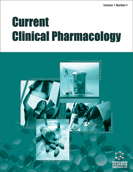Abstract
Background: The International Conference of Harmonisation (ICH) Guideline E9 Statistics Principles for Clinical Trials recommends that surrogate endpoints in clinical trials be validated using either (1) the sensitivityspecificity approach or (2) regression analysis. The problem with (1) is that an overall level of validity is hard to achieve, and with (2) is that a significant correlation between the surrogate and true endpoint is not enough to indicate that the surrogate is a valid predictor. Objective: To provide for a nonmathematical readership, procedures that avoid the above two problems. Results and Conclusions: 1. Instead of the sensitivity-specificity approach, we used an overall validity level, expressed as the percentage of patients with a true surrogate test, either positive or negative. We calculated confidence intervals of this estimate, and assessed whether they were entirely within the prespecified interval of validity. If so, the surrogate marker was validated for use in subsequent trials. 2. For validating continuous surrogate variables, regression analysis was used, accounting for both the correlation between the surrogate and true endpoints, and the associations between these two variables and the treatment modalities to be tested. If the proportion of variability in the surrogate endpoint explained the true endpoint by 70% or more, the surrogate test was validated. A wrong conclusion here would be to accept validity if the surrogate endpoint was an independent determinant of the true endpoint, but not of the treatment modality. It is to be hoped that this paper will affect the validity of future clinical trials constructed with surrogate endpoints.
Keywords: Validation, surrogate endpoints, surrogate markers, clinical trials, required sample size, 95% confidence intervals, regression modelling
 10
10





















